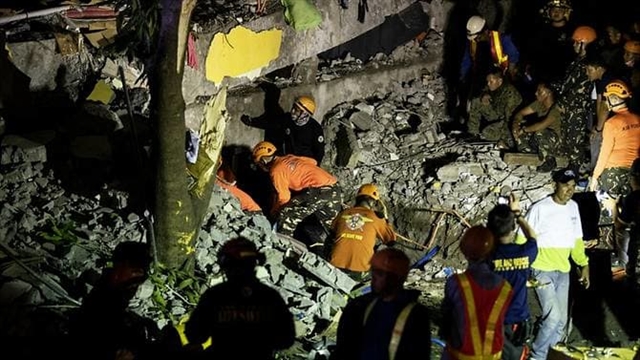 World
World


|
| Rescue workers search through rubble in Porac, Pampanga, after a powerful earthquake hit northern Philippines on Monday. AFP Photo |
PORAC — Philippine rescuers were scrambling on Tuesday to reach dozens of people feared buried under a building near Manila that collapsed a day earlier in a powerful earthquake, as the death toll climbed to 11.
The 6.3 magnitude quake struck northwest of the capital on Monday, scientists from the US Geological Survey said, heavily damaging an airport and sending terrified locals fleeing swaying high-rises.
The worst of the damage was in the province of Pampanga, which was the site of all 11 fatalities, disaster officials said. Dozens of others were injured by falling rubble, including in Manila.
The toll could rise as crews fanned out across the region to assess damage in isolated hamlets that lost power and communications in one of the area's strongest tremors in years.
Scores of rescuers in the town of Porac were wielding cranes and jackhammers to peel back the pancaked concrete structure of a four-storey building where up to 30 people were unaccounted for.
"They (rescuers) still hear at least one person who is still alive," Pampanga Governor Lilia Pineda told journalists.
"This person is buried under concrete slabs."
The quake also damaged several centuries-old churches which were crowded with worshippers in recent days as the majority-Catholic Philippines marked the Easter holiday.
High-rise buildings in the capital swayed after the tremor struck on Monday evening, leaving some with large cracks in their walls.
The quake was centred on the town of Castillejos, about 100km northwest of Manila, local geologists said.
Dani Justo, a martial arts instructor, said she was at her southern Manila home when the quake struck.
"The clothes hanging on our line were really swaying. My shih tzu (dog) dropped flat on the ground," she added.
The Philippines is part of the Pacific "Ring of Fire", an arc of intense seismic activity that stretches from quake-prone Japan through Southeast Asia and across the Pacific basin. — AFP




